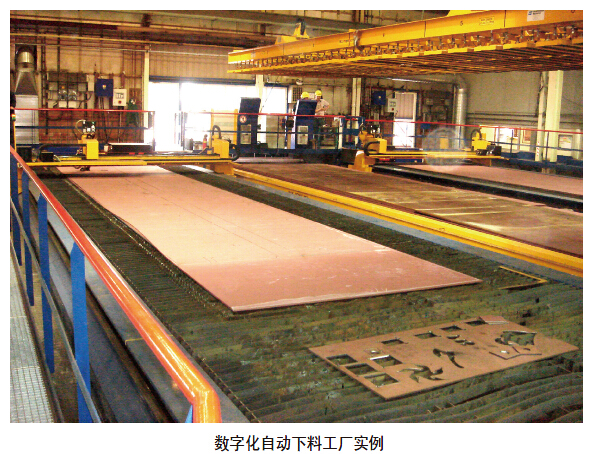In recent years, the widespread adoption of robotic automatic welding technology in the construction machinery industry has significantly raised the standards for the precision and quality of blanking parts. Traditional cutting equipment is no longer sufficient to meet the demands of automated welding and high-precision assembly. Additionally, as the national "industrialization and informationization" policy continues to drive technological advancement, the integration of intelligent and information-based cutting equipment has become a key trend in modern construction machinery manufacturing.
**Application Status of Cutting Technology in Construction Machinery**
**1. Characteristics of Cutting Parts and Process Requirements**
Cutting and welding are closely related in the construction machinery industry. The quality of the cut directly impacts the welding outcome. With the increasing use of robotic automatic welding, new demands have emerged for the accuracy and quality of plate cutting.
The construction machinery industry has several distinct features:
- Most cutting parts are made from low carbon steel (Q235) and low alloy high-strength structural steel (Q345), with limited use of non-ferrous metals and non-metals.
- Many welded components are made from medium to thick plates, leading to a large volume of cutting work. For example, plates between 8–30mm in thickness account for over 80% of total steel consumption in engineering machinery.
- The shapes of cutting parts are often complex and large, making them prone to deformation after cutting.
- As robotic automated welding becomes more common, the requirements for dimensional accuracy and cumulative size control of sheet parts have become stricter.

**2. Application of Cutting Technology**
Given the technical requirements in the construction machinery industry, flame, plasma, and laser cutting technologies are widely used. As cutting technology advances, the application of plasma and laser cutting has gradually replaced traditional flame cutting.
Key trends in equipment selection include:
- **Collaborative use of three cutting methods**: Plasma cutting is mainly used for plates between 8–25mm, offering cost-effectiveness and efficiency. Laser cutting is preferred for thin plates below 8mm, while flame cutting is used for thick plates over 25mm due to its high efficiency and low cost.
- **Fine cutting technology is widely adopted**: Modern automated welding systems require higher dimensional accuracy, prompting the use of fine plasma and laser cutting. Small hole processing is typically done via laser, eliminating the need for drilling.
- **Efficiency is becoming a priority**: Multi-head cutting equipment is now common, significantly boosting productivity. Some companies even use 12-head flame cutting for thick plates.
- **High-power and large-format equipment are trending**: Due to the large size of construction machinery components, wide-format cutting machines are increasingly favored. High-power plasma and laser systems are also being adopted to enhance performance.
More exciting content
Welcome to Metalworking Online》》》Essen Special Report

The 19th Beijing Essen Welding & Cutting Fair
**Development Trends of Blanking Factories in the Construction Machinery Industry**
As the manufacturing level of the construction machinery industry improves, some limitations of current cutting technologies are becoming more apparent. Current issues include high labor intensity, poor working conditions, and low automation levels in the cutting process. To address these challenges, a new concept — the digital automatic cutting factory — has emerged.
**1. System Composition of Digital Automatic Cutting Factory**
A digital automatic cutting factory includes CNC cutting equipment, intelligent driving systems, steel plate transfer trolleys, production management systems, and warehouse management systems. These components work together to automate the entire cutting process, from material handling to cutting and storage. This system enables real-time monitoring, task allocation, and efficient production planning.
**2. Features of Digital Automatic Cutting Factory**
The implementation of a digital automatic cutting factory will transform traditional production models by reducing manual labor and enabling full digital management of production, scheduling, and logistics. Operators can focus on supervision and optimization, achieving a deeper integration of industrialization and informatization. This approach not only enhances production efficiency but also sets the stage for the future development of the construction machinery industry.
More exciting content
Welcome to Metalworking Online》》》Essen Special Report

The 19th Beijing Essen Welding & Cutting Fair
Disposable Cuvettes,Cuvette For Uv Spectroscopy,Plastic Cuvette Spectrophotometer,Cuvette Uv Spectrophotometer
Taizhou TOPAID Medical Device Co,,ltd , https://www.topaidgen.com